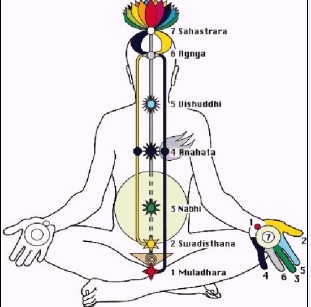In Ancient Egypt they believed the living possess three elements, a body, a soul (Egypt's ka), and a spirit (Egypt's ba), this pyramid has three unique chambers that seem to mirror the expected afterlives for each of these elements. Similarly, the passageways between these chambers closely reflects Egypt's vision of the processes and changes thought to occur along the journey from life to death.
Fifty feet above the base, the pyramid's entrance opens into a steeply descending, claustrophobically narrow corridor that shoots down almost to ground level before it finally forks into two branches. One branch plummets further down to an underground chamber known as ‘the pit', while the other branch ascends back up again. This ascending passage eventually forks into two branches as well, one leading to the ‘Queen's Chamber' and another to the ‘King's Chamber'. The first fork in the pyramid's corridor seems to represent the "first death", the initial change a person experiences upon their demise, when their mind and body disengage and go their separate ways. Similarly, the second fork seems to reflect the "second death", when the spirit and soul disengage as well, fracturing the mind apart.
At the first fork, one branch continues downward, tunneling deep under the monument until it reaches a rough-hewn cave containing nothing but a shallow, empty pit. Crudely carved out of the actual bedrock the pyramid rests upon, this grave-like cell is small, dark, and airless, perfectly symbolizing the end of the physical body at death. Meanwhile, the ascending branch rises just as sharply upwards again, appropriately symbolizing the hopeful promise of the mind's survival as it separates from its failing corpse. However, the very beginning of this upward passage is blocked by a thick granite plug, an appropriate reminder that nothing physical can escape the inevitable descent into death. Of the three components Egyptian theology credited a living person as possessing, only the two nonphysical elements, the ba and ka, could hope to pass into this ascending corridor.
On the other side of that granite plug, the person's ba and ka could continue on together, proceeding up the passage until they reach the place where it also forks off into two directions, one path leveling out to the Queen's Chamber and another ascending higher still to the King's Chamber. The Queen's Chamber seems to represent the final destination and afterdeath fate of the ka. The room is void of contents except for a niche in the East wall thought to once hold a life size ‘ka -statue' of the king, within which his living ka would be able to endure eternity. This chamber is aboveground, perhaps symbolizing that the soul living here does successfully survive death, continuing at least to exist. However, multiple features of this chamber suggest the unpleasant nature of that existence. Built of limestone, the walls and ceiling are smooth and polished, but the floor has been left rough and uneven, suggesting that the soul left here will not find his afterdeath experience easy and joyful, but instead quite rough and unpleasant. Also, both this room and the King's Chamber contain something like air shafts, tiny vents extending out towards the exterior walls of the pyramid. But unlike those of the King's Chamber, the Queen's air shafts come up disappointingly short, stopping many feet before they reach open air. This seems to symbolize that the soul living here, even though technically still alive, remains trapped and imprisoned after death.
The air shafts of the larger and more luxurious King's Chamber, however, do reach all the way outside, making it the only room in the pyramid equipped with any way out. This reminds us that the ancient Egyptians believed the ba to be the only part of a person guaranteed to enjoy true freedom after death, the only part guaranteed to completely escape the bonds of death, going on from there to visit new realities and begin new experiences. Built entirely of beautiful rose granite, the finely polished stones of the King's Chamber are the heaviest in the entire pyramid, reflecting the magnificent afterlife of the ba.
But the ba did not have to enter the King's Chamber alone, for the second fork in the pyramid's passageways is quite different than its predecessor. While the first fork had the upper path blocked off, the second fork leaves both its branches open. While all BSD cultures acknowledged the inevitability of the first death, some felt the second death was avoidable if the proper steps were taken. Egypt believed it was possible to prevent the ka and ba from dividing, in which case both of them could travel together to the paradisaical afterlife symbolized by the King's Chamber. Indeed, not only does the second fork leave both branches open, but instead of blocking the upper branch, the structure actually seems to encourage one to choose the upper path. Known as the Grand Gallery, the ascending passageway from the second fork to the King's Chamber has an extravagantly tall ceiling, which is a huge relief after squeezing through all the tiny corridors that led to this point.

